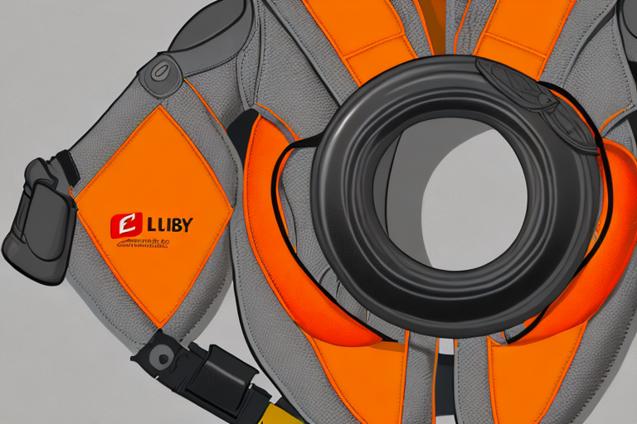
Proper sail trim and boat speed are crucial for safe and enjoyable sailing. Learn the fundamentals and essential safety tips in this comprehensive guide.
The Sail Trim and Boat Speed Safety Tips
Sailing is an exhilarating and rewarding experience, but it also requires a certain level of skill and knowledge to ensure a safe and enjoyable journey. One of the most important aspects of sailing is understanding how to properly trim your sails and manage your boat’s speed. In this comprehensive guide, we will explore the fundamentals of sail trim and boat speed, as well as provide essential safety tips for those embarking on their own sailing adventures.
Table of Contents
- Understanding Sail Trim
- The Importance of Boat Speed
- Sail Trim and Boat Speed Safety Tips
- Conclusion
Understanding Sail Trim
Sail trim is the process of adjusting the angle and shape of your sails to maximize their efficiency and harness the power of the wind. Proper sail trim is essential for maintaining control of your boat, optimizing its performance, and ensuring a smooth and comfortable ride. Here are some key concepts to help you understand the basics of sail trim:
The Three Forces of Sail Trim
-
Lift: Lift is the force generated by the wind as it flows over the surface of the sail, causing the boat to move forward. The goal of sail trim is to maximize lift while minimizing drag.
-
Drag: Drag is the resistance created by the sail as it interacts with the wind. Excessive drag can slow down your boat and make it more difficult to control.
-
Heeling: Heeling is the sideways force created by the wind on the sails, causing the boat to lean over. While some heeling is necessary for efficient sailing, excessive heeling can lead to instability and even capsizing.
The Four Elements of Sail Trim
-
Sail Angle: The angle of the sail relative to the wind is crucial for generating lift and minimizing drag. The sail should be angled so that the wind flows smoothly over both sides, creating an efficient airfoil shape.
-
Sail Shape: The shape of the sail is determined by the tension applied to its various control lines. A flatter sail generates less drag and is more efficient in strong winds, while a fuller sail provides more power in light winds.
-
Sail Balance: Balancing the forces on the sails is essential for maintaining control of the boat. The main sail and jib should be trimmed so that they work together to create a balanced and efficient sail plan.
-
Sail Twist: Twist refers to the difference in angle between the top and bottom of the sail. A small amount of twist is necessary to account for variations in wind speed and direction, but excessive twist can reduce the sail’s efficiency.
The Importance of Boat Speed
Boat speed is a critical factor in safe and efficient sailing. Maintaining a consistent and appropriate speed allows you to better control your boat, respond to changing conditions, and avoid potential hazards. Here are some reasons why boat speed is so important:
-
Maneuverability: A boat traveling at an appropriate speed is more responsive and easier to control, allowing you to make quick adjustments and avoid obstacles.
-
Stability: Maintaining a steady speed helps to keep your boat stable and upright, reducing the risk of capsizing or losing control.
-
Comfort: A smooth and consistent speed makes for a more comfortable and enjoyable ride for you and your passengers.
-
Efficiency: Optimizing your boat’s speed allows you to make the most of the available wind power, reducing the need for engine use and conserving fuel.
Sail Trim and Boat Speed Safety Tips
Now that we’ve covered the basics of sail trim and boat speed, let’s explore some essential safety tips to keep in mind while sailing:
1. Know Your Limits
It’s important to be aware of your own skill level and the capabilities of your boat. Don’t push yourself or your vessel beyond its limits, as this can lead to dangerous situations and potential accidents.
2. Monitor the Weather
Always keep an eye on the weather and be prepared to adjust your sail trim and boat speed accordingly. Sudden changes in wind speed or direction can have a significant impact on your boat’s performance and stability.
3. Maintain Proper Lookout
Stay vigilant and maintain a proper lookout at all times. Keep an eye out for other boats, obstacles, and potential hazards, and be prepared to adjust your course and speed as needed.
4. Use Appropriate Safety Gear
Ensure that you and your passengers are wearing appropriate safety gear, such as life jackets and harnesses, especially in rough conditions or when sailing at high speeds.
5. Practice Reefing
Reefing is the process of reducing the sail area to decrease the power generated by the wind. Practice reefing your sails in various conditions to become more comfortable and efficient at this essential skill.
6. Regularly Inspect Your Rigging
Regularly inspect your rigging, sails, and control lines for signs of wear or damage. Replace or repair any damaged components as needed to ensure the safety and performance of your boat.
7. Communicate with Your Crew
Effective communication is crucial for maintaining a safe and efficient sailing environment. Make sure your crew understands their roles and responsibilities, and keep them informed of any changes in conditions or plans.
Conclusion
Sail trim and boat speed are essential aspects of safe and efficient sailing. By understanding the fundamentals of these concepts and following the safety tips outlined in this guide, you can confidently embark on your own sailing adventures and fully embrace the freedom and fulfillment that comes from choosing an unconventional path. Remember to always prioritize safety, stay vigilant, and enjoy the journey as you explore the open sea with your family.